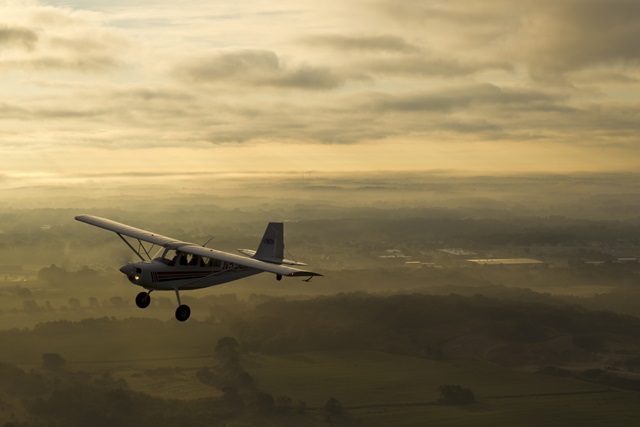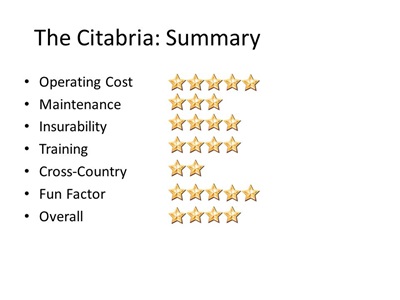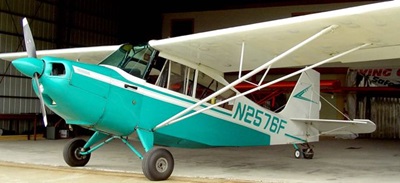 The Aircraft Spotlight feature looks at an airplane type and evaluates it across six areas of particular interest to flying clubs and their members: Operating Cost, Maintenance, Insurability, Training, Cross-Country, and Fun Factor.
The Aircraft Spotlight feature looks at an airplane type and evaluates it across six areas of particular interest to flying clubs and their members: Operating Cost, Maintenance, Insurability, Training, Cross-Country, and Fun Factor.
For a club looking to differentiate itself from other clubs or local FBOs, you might consider adding a taildragger to your fleet since there aren’t many available to rent. The East Hill Flying Club (EHFC) at Tompkins County Airport (ITH) in Ithaca, New York, operates several aircraft ranging from Cessna 152s and C-172s, a Mooney 201, a Flight Design CTLS LSA, a twin-engine Piper Seneca II, and a Citabria. President David St. George discusses the pros and cons about adding the Citabria to its fleet to offer club members a tailwheel aircraft.
 Operating Cost (5 stars)
Operating Cost (5 stars)
Operating costs are almost identical to a Cessna 152. It burns about 5.5 gph and has the same O-235 engine as the Cessna 152. East Hill charges $116/hour wet, which is less than what it charges for a 172, but more than a 152. The rate reflects some costs to upgrade the aircraft. “We brought up the rate because we had to recover some wing surfaces and put in a new fuel tank, so we had some costs there—more upgrading than maintaining,” David said.
Prices vary from about $30,000 for a late 1960s or early 1970s model to $85,000 to $100,000 to one built in the past 15 years or so. Depending on your club’s finances, there are a number of options available both in price and equipment.
Maintenance (3 Stars)
“There’s really not that much more maintenance in a tailwheel, maybe less,” David said. However, “when you’re dealing with anything exotic, you need someone who knows the machine well and can advise you correctly. You have to find a good, savvy type mechanic, and it is not always easy.”
The Citabria breed has an AD requiring a one-time inspection of the wooden spar where they have to check it for cracks. “When we thought we had a cracked spar, we were calling the factory. I think it was $20,000 a wing for each side for a new wing with a metal spar,” David said. “We were down for almost eight months. That would never happen with a 152 or a 172.”
Keep in mind it is a tube and fabric airplane, so it needs to be hangared. And depending on how old the fabric is and how much exposure it has to the sun, it will need to be replaced at some point. Generally it is about every 20 to 25 years.
Insurability (4 stars)
EHFC pays hull and liability and neither one is excessive because the value of the plane isn’t that much. The liability is spread over the whole fleet David said.
East Hill has no particular insurance requirement in terms of checking someone out in it. “Our rules, what we have internally, are accepted by the insurance company,” David said. “If we find somebody is competent in five hours, we can sign them off to go solo.”
There is a 10-hour minimum and an endorsement required for initial solo. All Citabria pilots require annual approval and three take-offs and landings every 45 days to maintain their currency in the Citabria.
 Training (4 stars)
Training (4 stars)
“It’s a forgiving plane. It is fairly durable. You solo it from the front, you’ve got pretty good visibility, and it’s pretty directionally straight,” David said. There aren’t many flight schools that offer tailwheel endorsements, making the addition of a tailwheel aircraft to a club fleet an attractive marketing tool. East Hill provides tailwheel transition training in the Citabria and the plane has attracted new members. It can also be used for primary training, although EHFC does not offer primary instruction in the aircraft.
“We think it’s a good training tool and it builds skill in pilots. Everyone that has flown it said it has really enhanced their flying abilities,” David said. “That’s one of the reasons we wanted it, for the purpose of building skill in our pilot population. I have no question that it improves every pilot and everyone we’ve trained is convinced of that as well.”
It could be used for specialized training like upset recovery or aerobatics, but with the wooden spars, EHFC has chosen not to do so. You’d also need parachutes that have to be repacked every 90 days for that type of training and that would add a cost.
One drawback is it could be a problem for a club to find instructors who can teach in it.
Cross-Country Travel (2 stars)
“It’s more for local hops and having fun. It’s not something you’d take from our location up to Maine on a 500-mile trip,” David said. The Citabria cruises at 95 mph max and it has a range of five hours or about 400 miles. It’s like taking a 152 on a cross-country. “Your butt’s going to wear out, which limits your range. We don’t mind people taking it, but it’s not the mission for the plane,” David added.
Fun Factor (5 stars)
“One of our purposes is to provide enjoyment in aviation,” David said. “The Citabria is certainly very high on the fun factor. It’s not a business tool. It’s not going to get you to your business meeting in Atlanta, that’s not what it’s for.
"It does anything that a 152 could do, so it fulfills the training role and it’s a lot more fun to fly. It puts a smile on your face every time.”
Overall (4 stars)
A taildragger isn’t for everyone, but if you are looking to add variety to your fleet at an affordable price, and want a touch of romance, than the Citabria is something to consider. “We want to continually excite members with new things to learn and do, and a tailwheel is perfect for that. It’s not real expensive. It has broad appeal and has a lot of different local missions. Our club is 60 years old and we started with tailwheel aircraft, a PA-11 and Stinson 108, and we wanted to keep in touch with that kind of romance,” David said. “It’s a local fun flyer. That’s the big reason for that plane—build skill and have fun.”